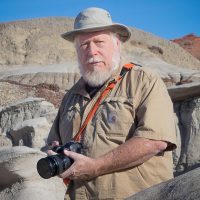National Bison Range Montana

The National Bison Range is a diverse ecosystem of grasslands, Douglas fir and ponderosa pine forests, riparian areas and ponds. The Range is one of the last intact publicly-owned intermountain native grasslands in the U.S.
President Theodore Roosevelt established the National Bison Range on May 23, 1908 when he signed legislation authorizing funds to purchase suitable land for the conservation of bison. It was the first time that Congress appropriated tax dollars to buy land specifically to conserve wildlife. The overall mission of the National Bison Range is to maintain a representative herd of bison, under reasonably natural conditions, to ensure the preservation of the species for continued public enjoyment.
The original herd of bison released in 1909 was purchased with private money raised by the American Bison Society and then donated to the Refuge. Today, 350-500 bison call this refuge home.
What to Photograph:
The first obvious thing to photograph is the bison, but the in addition to herds of bison, it supports populations of Rocky Mountain elk, mule deer, white-tailed deer, pronghorn, and bighorn sheep as well as coyotes, mountain lions, bears, bobcat and over 200 species of birds. In spring there are many native wildflowers including balsamroot, yellowbells, lupine and paintbrush. There are also scenic drives such as the Red Sleep Mountain Drive (mid-May to early-Oct). This 19-mile, one-way loop road gains 2,000 feet and there are many switchbacks and 10% grades along the drive.
Best Time for Photographers:
Dawn and dusk are the best times for photographing wildlife, keep in mind that the refuge closes at dark and it can take quite a while to complete the Red Sleep Mountain Drive.
Operating hours:
Gate times will change frequently as days get longer or shorter. The Refuge closes to all public use at night.
Getting There:
The National Bison Range is located in the Mission Valley of Northwest Montana.
From the south, take Highway 93 north to Ravalli, turning west on Highway 200 to Highway 212. Travel north on Highway 212 for 5 miles to the entrance.
From the north, take Highway 93 south of Polson for 18 miles to State Highway 212; travel 12 miles to the entrance.
From the west, turn north off Interstate 90 onto Highway 135 at St. Regis. Turn east at Highway 200 to Highway 212 just east of Dixon. Travel north on Highway 212 for 5 miles to the entrance.
GPS coordinates to Front Gate: N47 22.338 W114 15.807
Decimals and degrees: 47.372302 -114.263445
Maps:
Interactive Google Map
Use the map + – controls to zoom in and out, click and drag the to move the map, use the Map drop-down to change to “Map”, “Satellite”, “Hybrid”, or “Terrain” views. Drag the little man icon from the upper left corner to a map location for street level view.

Cost:
Day Passes to the Bison Range:
Private vehicle – $5.00
Commercial van – 5 or less people – $5.00
Commercial van – 6-10 people – $10.00
Commercial van – over 10 people – $12.00
Bus and Tour Groups – $25.00
Bison Range Season Pass – $15 (Valid for one year from date of issue)
Facilities:
The closest lodging and camping are available in the nearby communities Ronan and St. Ignatius (18 miles and 15 miles respectively). For an extensive list of state-wide accommodations, check out the official State Travel Site of Montana.
Gasoline (no diesel) and basic supplies are as close as the front gate, at the Moiese Mercantile as well in communities on the way to the Bison Range.
There are no public phones in the immediate vicinity of the Bison Range Visitor Center and cell phone reception is spotty. Please plan accordingly.
Location Contact Information:
National Bison Range Office:
Mailing/Physical Address
National Bison Range
58355 Bison Range Road
Moiese, MT 59824
Main phone – 406/644-2211
FAX 406/644-2661
General email: bisonrange@fws.gov
National Bison Range Website
Nearest City or Town:
The National Bison Range is about 50 miles north of Missoula Mt.
National Bison Range Photo Gallery
Click Here for full page gallery
More Photographic Destinations in Montana:
Interactive Google Map
Use the map + – controls to zoom in and out, use the Map drop-down to change to “Map”, “Satellite”, “Hybrid”, or “Terrain” views. Drag the little man icon from the upper left corner to a map location for street level view. Click on a pushpin for more information about the Photographic Destination, then click on the title to go to the location page.
Click Here for Photographic Destinations by State






